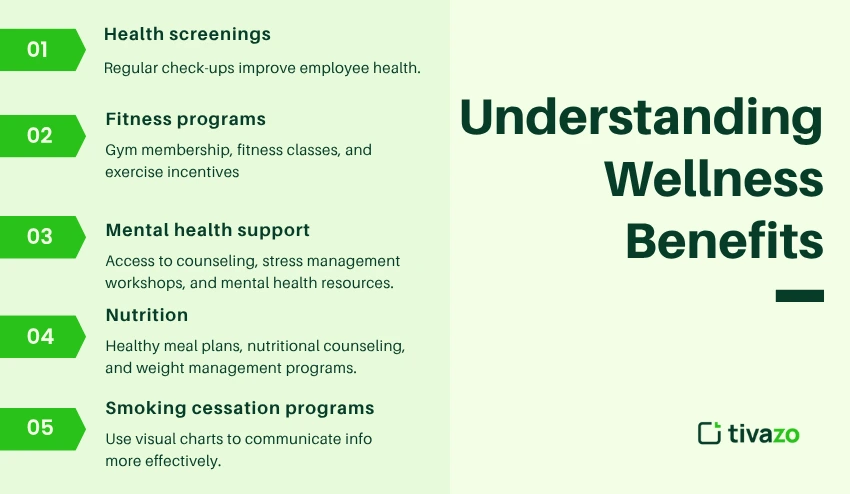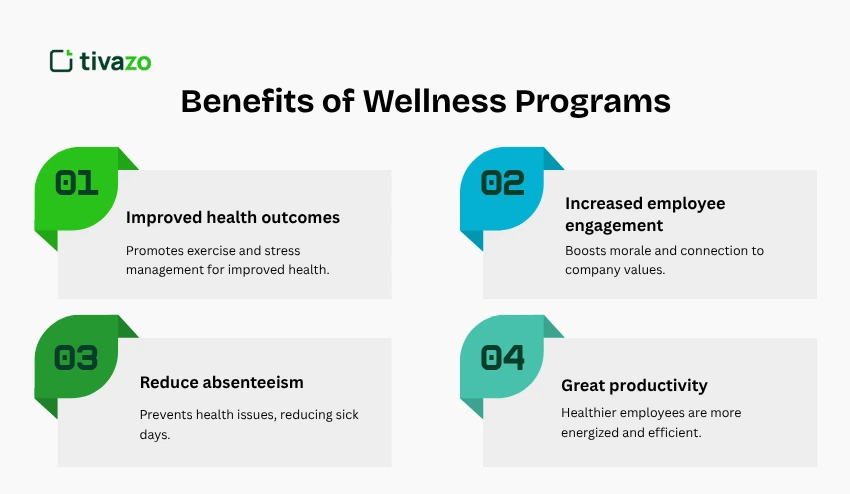Corporate Health and Wellness Programs: Building a Culture of Thriving Employees
Every morning, employees arrive at their desks with tired minds and heavy shoulders. They push through deadlines, ignoring stress and skipping breaks. Slowly, their productivity drops.
Many employees don’t realize that without a strong wellness program, they are losing their best people to silent burnout. But here’s the good news: employers have the power to change this. They can reduce burnout, boost productivity, and build a culture where employees thrive.
It’s time to build corporate health and wellness programs that truly work, programs that don’t look good in a handbook but make people feel good every single day.
Key Highlights:
- What is Employee Wellness
- Understanding Wellness Benefits
- Importance of Corporate Health And Wellness Programs
- Benefits of Wellness Programs
What is Employee Wellness?
Employee wellness refers to the overall well-being of employees. The concept of employee wellness recognizes that a healthy and happy workplace is not beneficial for individual employees but also contributes to the success and productivity of an organization.
Understanding Wellness Benefits
Wellness benefits refer to a range of programs and initiatives designed to improve the overall health and well-being of employees. These benefits can be categorized into many types, including

- Health screenings: Regular check-ups improve employee health.
- Fitness programs: Gym membership, mini fitness trampoline classes, and exercise incentives.
- Targeted.
- Mental health support: Access to counseling, stress management workshops, and mental health resources.
- Nutrition: Healthy meal plans, nutritional counseling, and weight management programs.
- Smoking cessation programs: Resources and support to help employees quit smoking.
Why Are Corporate Health And Wellness Programs So Important?
Corporate health and wellness programs have multiple advantages, some of which include:
- Health awareness: Running corporate wellness initiatives, like healthcare screenings and educational programs, can help reduce the health-related conditions or diseases like diabetes or cardiovascular disease.
- Increases in productivity and absenteeism: Addressing health concerns can reduce unhealthy habits and promote healthy behavior. Employees who are unhealthy are less productive and frequently absent from work due to illness.
- Improve staff retention: A well-reputed wellness program can attract highly experienced or qualified candidates to your organization.
- Developing a structured approach, such as creating a wellness center business plan, can also ensure that your program is sustainable, measurable, and aligned with employee needs.
- Boost in staff morale: When employees can engage with one another, communicate openly, and feel appreciated by the company, studies have shown a marked improvement in work performance and staff mood.
How to Improve Your Health At the Workplace
There are many tactics you can use to improve your health in the workplace.

- Diet plan:
- Many workplaces provide free snacks with tempting treats. It’s very easy to indulge in sugar and fast food at the workplace. You should keep yourself away from that kind of food, as these are not healthy options and, over time, could lead to serious diseases. Bring a packed lunch with you to your workplace.
- Stay active:
- Many people work at a desk in front of a laptop all day. This adds up to more than 7 hours per day, which can cause joint problems. Try to take regular breaks to keep moving.
- Banish stress:
- Stress can have a huge impact on your mental and physical health. It can also lead to poor job performance, absenteeism, and social tension. Many people face stress due to heavy workloads and looming deadlines. Try to find a healthy work-life balance.
Benefits of Wellness Programs To Boost Employee Health And Wellness
Wellness programs have a profound impact on both employees and organizations.
They offer a range of benefits that contribute to a healthier, more productive workforce.

1. Improved health outcomes
Wellness programs are designed to promote healthy behaviors such as regular exercise and stress management. By encouraging these behaviors and providing resources for managing health conditions or mental health issues. These programs improve overall health outcomes.
2. Increased employee engagement
Increased engagement not only boosts morale but also strengthens the connection between employees and the organization’s values. Wellness programs always support employee health and encourage participation in educational workshops to help employees maintain their mental well-being.
3. Reduce absenteeism
Healthier employees are less likely to call in sick or take unplanned absences due to health-related issues. Wellness programs that emphasize preventive care and early intervention can help mitigate the occurrence of chronic conditions and illness, reducing absenteeism rates.
4. Great productivity
Healthier employees experience fewer health issues and have high energy levels, which positively impact their performance. Wellness programs that support physical fitness, mental health and work-life balance contribute to enhanced productivity across the organization, driving overall success and achievement of business goals.
Final Thought
Wellness and well-being are essential components of a healthy lifestyle. All organizations should consider wellness programs for their staff and look for ways to encourage good health in the workplace. Leveraging custom healthcare software development can help design tailored wellness solutions that meet the specific needs of your team. Keeping yourself healthy at work is also a personal responsibility. Find the right health plan to suit your medical needs. By supporting your employee, you strengthen your business.




